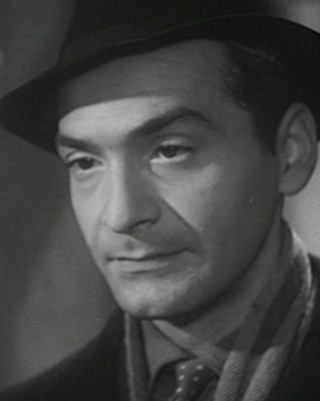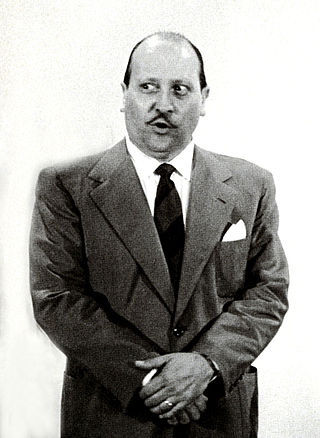
Vittorio De Sica was an Italian film director and actor, a leading figure in the neorealist movement.

George S. Barnes, A.S.C. was an American cinematographer active from the era of silent films to the early 1950s.

William H. Daniels ASC was a film cinematographer who was Greta Garbo's personal lensman, serving as the cinematographer for such Garbo-starring films as Torrent (1926), The Mysterious Lady (1928), The Kiss (1929), Anna Christie, Romance, Grand Hotel (1932), Anna Karenina (1935), and Camille (1936). Early in his career he worked regularly with director Erich von Stroheim, providing cinematography for such films as The Devil's Pass Key (1920) and Greed (1924). Daniels went on to win an Academy Award for Best Cinematography for his work on The Naked City (1948).

Frederick A. YoungOBE, BSC was a British cinematographer. He is probably best known for his work on David Lean's films Lawrence of Arabia (1962), Doctor Zhivago (1965) and Ryan's Daughter (1970), all three of which won him Academy Awards for Best Cinematography. He was often credited as F. A. Young.

Lee Garmes, A.S.C. was an American cinematographer. During his career, he worked with directors Howard Hawks, Max Ophüls, Josef von Sternberg, Alfred Hitchcock, King Vidor, Nicholas Ray and Henry Hathaway, whom he had met as a young man when the two first came to Hollywood in the silent era. He also co-directed two films with legendary screenwriter Ben Hecht: Angels Over Broadway and Actor's and Sin.
Sidney Barnett Hickox, A.S.C. was an American film and television cinematographer.

Guido Brignone was an Italian film director and actor. He was the father of actress Lilla Brignone and younger brother of actress Mercedes Brignone.

Mario Soldati was an Italian writer and film director. In 1954, he won the Strega Prize for Lettere da Capri. He directed several works adapted from novels, and worked with leading Italian actresses, such as Sophia Loren and Gina Lollobrigida.

Andrea Checchi was a prolific Italian film actor.

Carlo Ninchi was an Italian film actor. He appeared in more than 120 films between 1931 and 1963.

Carlo Campanini was an Italian actor, singer and comedian. He appeared in more than 120 films between 1939 and 1969.

Guido Celano was an Italian actor, voice actor and film director. He appeared in 120 films between 1931 and 1988. He also directed two spaghetti Westerns: Cold Killer and Gun Shy Piluk.

Carlo Romano was an Italian actor, voice actor and screenwriter.
Brock Williams was a prolific English screenwriter with over 100 films to his credit between 1930 and 1962. He also had a brief directorial career, and later also worked in television. Two of his novels The Earl of Chicago and Uncle Willie and the Bicycle Shop were both adapted into films.
Operetta films are a genre of musical films associated with, but not exclusive to, German language cinema. The genre began in the late 1920s, but its roots stretch back into the tradition of nineteenth century Viennese operettas.

Anchise Brizzi was an Italian cinematographer.
Eraldo Da Roma was an Italian film editor best known for his work with Roberto Rossellini, Vittorio De Sica, and Michelangelo Antonioni.

Ubaldo Arata was an Italian cinematographer. Arata worked on more than a hundred films between 1918 and his death in 1947. Arata entered cinema in the silent era and worked prolifically during the 1920s including on one of the final entries into the long running Maciste series. He was employed on the first Italian sound film The Song of Love (1930). Until the fall of Fascism, he was one of the leading Italian cinematographers working on propaganda films such as Scipione l'africano and Luciano Serra, Pilot (1938) as well as more straightforward entertainment films.
Mario Montuori was an Italian film cinematographer and painter.
George Robinson (1890-1958) was an American cinematographer from Los Angeles.














